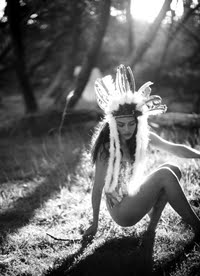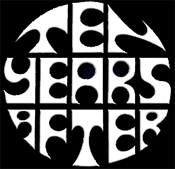CAUTION ! this music is not for everyone.
Listen at your own risk!
Fifty Foot Hose were founded by bassist Cork Marcheschi, who had previously been in a conventional rock/R&B band the Ethix. Under Marcheschi's prodding, in 1967, the Ethix released one wildly atonal single, "Bad Trip," whose violent musique concrète foreshadowed the avant-garde postures of his subsequent group (in fact, "Bad Trip" was more avant-garde than anything Fifty Foot Hose would record). (Apparently it was played once on a local underground radio station, and then never again.)
It's very easy to make "weird" music when the groundwork for what constitutes "weird" has already been done. It's not quite so easy being the band who decide to go "out there" in the first place. Congratulations then to San Francisco's Fifty Foot Hose – Nancy Blossom (vocals), David Blossom (guitar/piano), Larry Evans (guitar/ vocals), Terry Hansley (bass), Kim Kimsey (drums) and founder Louis "Cork" Marcheschi – who were one of the most radical groups of the psychedelic era, and whose experimentalism still has the power to shock and surprise even now.
While a hundred other bands put on beads and candy-striped pants and grew their hair, Fifty Foot Hose just got more and more odd. Marcheschi was a blues aficionado who built a synthesiser from material he found and scavenged. He constructed his own theremin, hooked up a saw blade to a microphone and ran the whole lot alongside a Hohner Echolette machine. The music he went onto make is, well, have a listen – it is utterly, utterly beautiful. And completely crazy. Signed to Limelight – then an off-shoot of Mercury, a label whose only other band was the studio-bound Sound of Feeling – Fifty Foot Hose recorded and released this one album, Cauldron, in 1967, which blended jazz, rock, soul, psychedelia and heavyweight electronics to startling effect.
Red the Sign Post is impossibly heavy acid-rock, Opus 777 is a fantastically brief DMT-like trip into a furious netherworld, Fly Free is pitched somewhere between Fairport Convention (whom they toured with) and the Doors, while God Bless the Child takes Billie Holiday and Arthur Herzog Jr's standard and rubs it up against whistling, space-jazz oddness. Most disturbing of all, though, are Bad Trip's two and a half minutes of hell and the head-wrecking tape-manipulation genius of the title track, which has to be heard to be believed. What's particularly striking about Cauldron is its serious intent, an intent which meant it was largely ignored upon release in December 1967. "It was a pretty conservative time" Marcheschi later noted, somewhat ruefully. Review from Spotify
Interest in Fifty Foot Hose resurfaced in the 1990s, as they became recognized as precursors to the electronic rock sounds of groups like Pere Ubu, Chrome and Throbbing Gristle, and Cauldron was reissued on CD. By this time, Marcheschi had become a respected sculptor, specializing in public work using neon, plastic, and kinetic characteristics.
In 1995, Marcheschi reformed the group for live performances in San Francisco, with a new set of musicians. These performances led to the release of the album Live & Unreleased, which was followed in 1997 by a new studio album, Sing Like Scaffold. On the latter album, Fifty Foot Hose essentially comprised Marcheschi (on echolette, twin audio generators, squeaky stick, white noise generator, theremin, spark gap, and saw blades), Walter Funk III (jokers Ulysses and Cupid constructed by Fred 'Spaceman' Long, Bug (Tom Nunn), vocoder, Hologlyphic Funkaliser and other electronix), Reid Johnston (guitube, guitar, tools, horns, harmonium, hardware, bikewheel), Lenny Bove (bass, electronics, vocals), Elizabeth Perry (atmospheric female vocals thrown in for good measure), and Dean Cook (drums).
Tracks 1-12 from "Cauldron"
13-14 from "Ingredients'
15-18 From "Live And Unreleased"
19-24 from "Sing Like Scaffold"












.JPG)












































































1 comments:
Btw when I was making similar music , I have used guitar samples from here
https://www.lucidsamples.com/house-sample-packs/216-guitar-house-mafia.html
Post a Comment